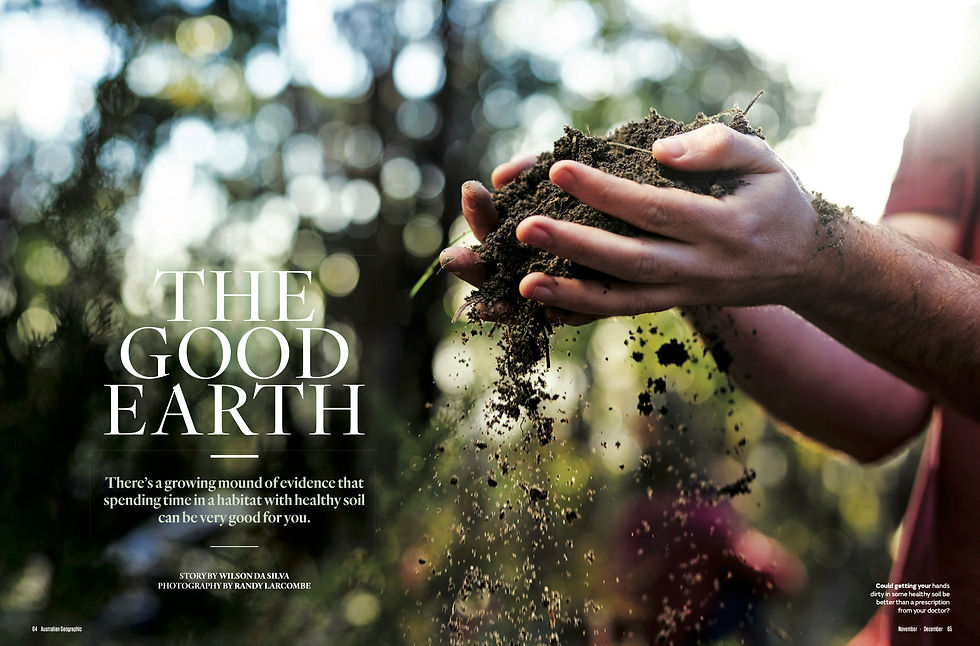Wilson da Silva Named 2020 Higher Education Journalist of the Year
- Wilson da Silva
- Feb 26, 2020
- 2 min read
Updated: Mar 24, 2023
National Press Club Media Release | 26 February 2020

Freelance journalist, Wilson da Silva, is named the 2020 Higher Education Journalist of the Year.
The Higher Education Media Awards presentation took place at the National Press Club of Australia, prior to the Chair of Universities Australia, Professor Deborah Terry’s National Press Club Address.
Freelance journalist, Wilson da Silva, was awarded the major prize of Higher Education Journalist of the Year for his piece, ‘The Good Earth’, published in the November edition of Australian Geographic.
The article explores the work of the Healthy Urban Microbiome Initiative (HUMI) at the Universities of Adelaide and Flinders. HUMI has linked the higher rates of immune-related disorders and diseases in cities, compared to country areas, to the degraded quality of soil in urban landscapes because of the prevalence of what might be called ‘bad’ bacteria. It has now begun a program to determine if ‘rewilding’ soils in urban landscapes - by introducing greater microbial diversity to boost ‘good' bacteria - can also boost human health outcomes, with the results already looking promising.
“It was the kind of story that only a writer with a real commitment to understanding the work and purpose of universities could pull off.”
In his submission, Wilson said, “it shows the value of exploratory research in a university setting and how the freedom academics are given to probe questions that fascinate them can deliver real benefits to society."
The judges said Wilson’s story was an excellent example of the important work undertaken by universities.
“It was the kind of story that only a writer with a real commitment to understanding the work and purpose of universities could pull off.”

The Keep it Clever University Research in Media Award went to Roy Eccleston for his feature article ‘It’s a partner in crime ... once the flu makes you sick, it takes the opportunity to attack’ in The Advertiser’s SA Weekend.
The story looked at the research being undertaken by the University of Adelaide’s Research Centre for Infectious Diseases to develop a single vaccine to target both influenza and pneumococcal disease, one of the biggest bacterial killers on the planet, which can often follow the flu.
The judges said, “Roy’s piece, for a general weekend audience, was admirably balanced and neither trivialised nor sensationalised the research being undertaken.'
The objectives of these prestigious awards are to recognise quality journalism and commentary that informs deeper public understanding of the contribution that universities make to our society and importantly the Australian Economy. The Higher Education Media Awards are supported by Universities Australia, the peak body representing Australia’s universities.
The Higher Education Journalist of the Year receives an international study tour to the value of $10,000 and the winner of the Keep it Clever University Research in Media category receives a cash prize of $2,000.
You can read a PDF of the winning story by clicking the image link below.


Comments